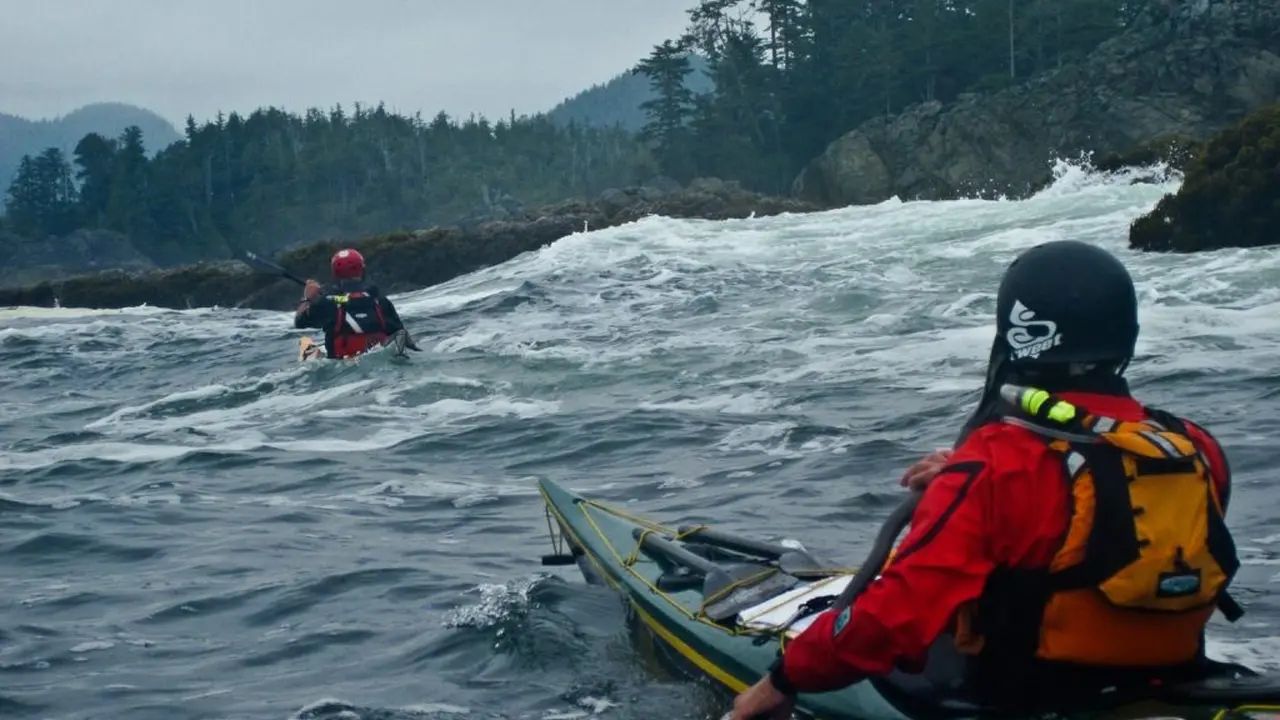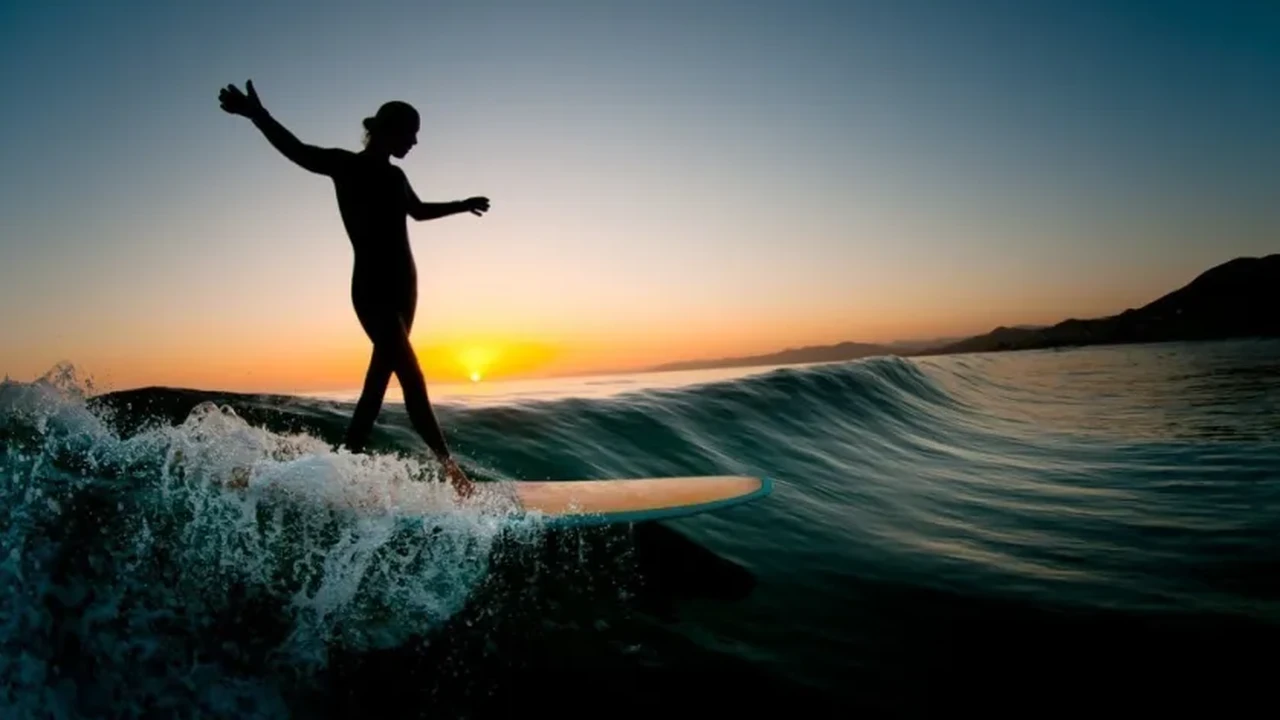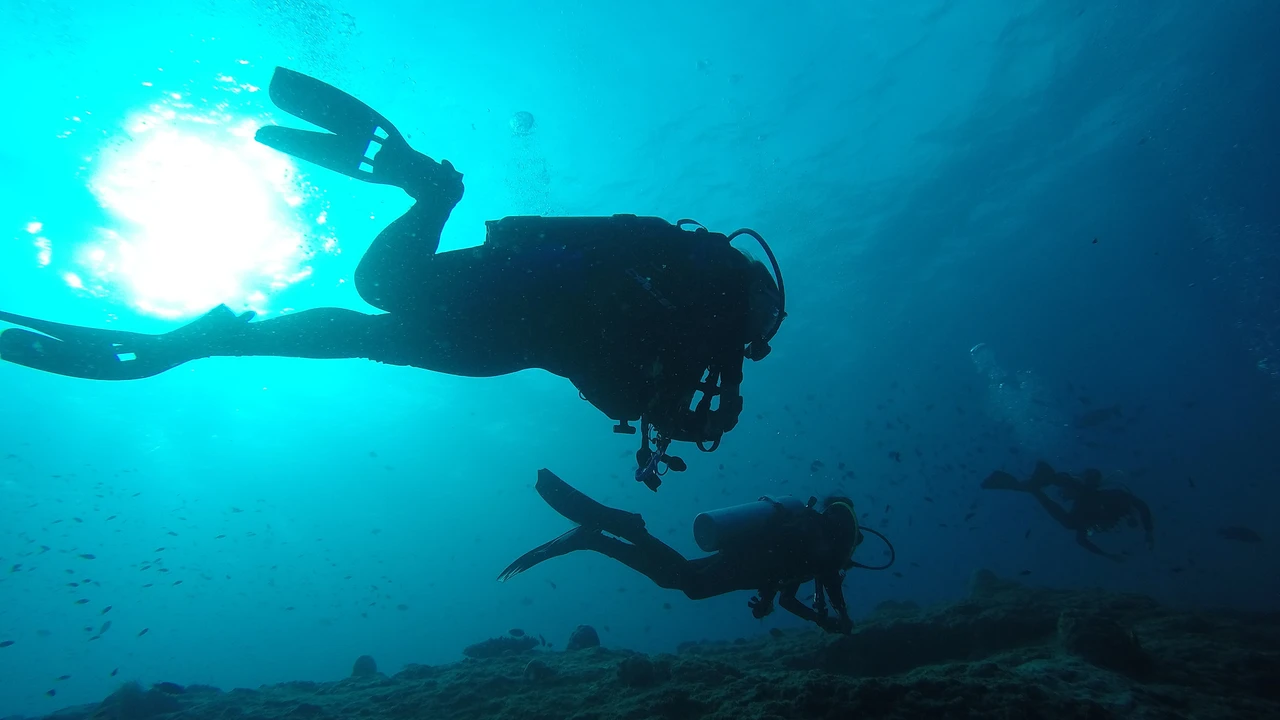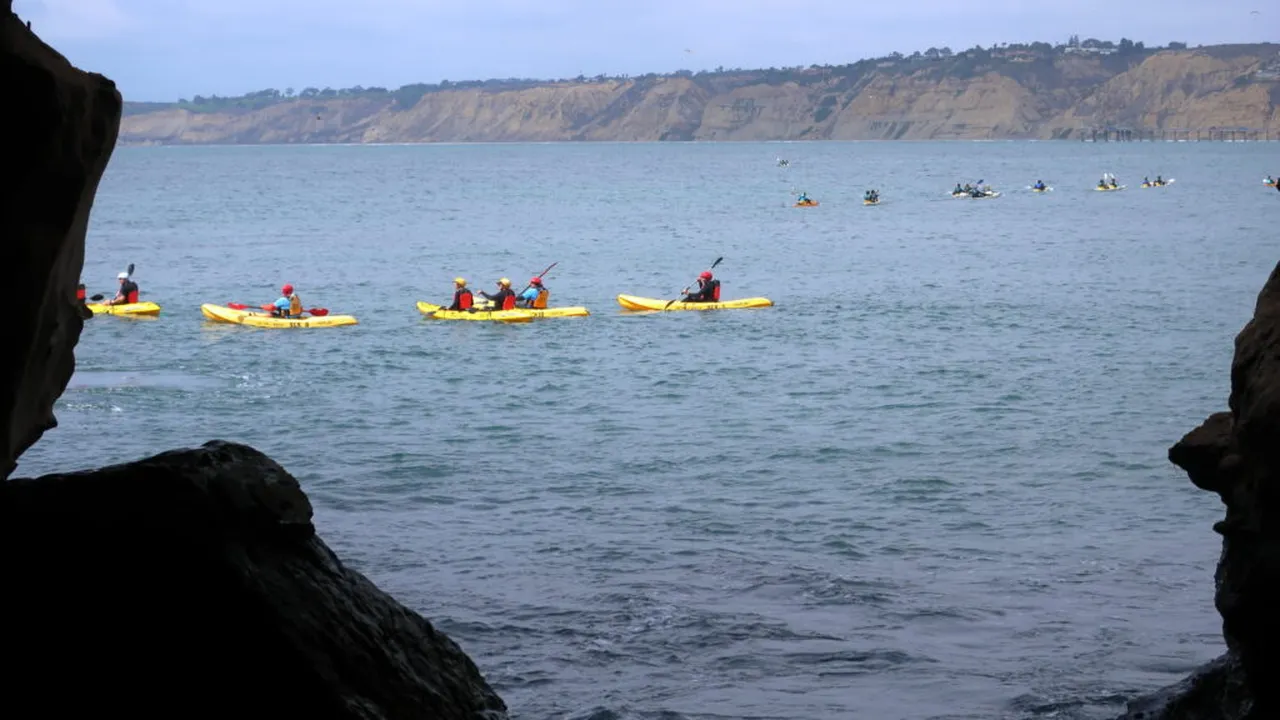Kayaking Photography Tips for West Coast Paddlers

Unveiling the Allure of West Coast Kayaking Adventures
The West Coast of North America, a rugged tapestry woven with towering forests, dramatic cliffs, and the boundless expanse of the Pacific Ocean, beckons adventurers with its untamed beauty. Among the myriad ways to experience this coastal paradise, kayaking stands out as a particularly intimate and rewarding pursuit. Gliding silently through pristine waters, you're granted unparalleled access to hidden coves, secluded beaches, and a vibrant ecosystem teeming with life. But before you embark on your West Coast kayaking odyssey, let's delve into what makes this region so special and how to prepare for an unforgettable experience.
Choosing the Right Kayak for Your West Coast Expedition
Selecting the perfect kayak is paramount to a successful and enjoyable West Coast kayaking adventure. The vastness and diversity of the coastline demand careful consideration of your skill level, intended paddling environment, and desired level of comfort. Let's explore some popular kayak types and their suitability for different West Coast scenarios.
Sit-on-Top Kayaks A Beginner Friendly Option
Sit-on-top kayaks are characterized by their open deck design, making them incredibly stable and easy to maneuver. These kayaks are ideal for beginners and those who prefer a more relaxed paddling experience. Their self-bailing design ensures that any water that enters the kayak quickly drains away, eliminating the risk of capsizing. However, sit-on-top kayaks offer limited protection from the elements, so they are best suited for warmer climates and calmer waters.
Sit-Inside Kayaks Enhancing Performance and Comfort
Sit-inside kayaks feature an enclosed cockpit, providing paddlers with greater protection from wind, waves, and spray. These kayaks are generally faster and more efficient than sit-on-top kayaks, making them a great choice for longer expeditions and challenging conditions. Sit-inside kayaks also offer more storage space for gear and supplies, making them ideal for multi-day trips. However, they require more skill and experience to paddle, as they can be more difficult to re-enter after a capsize.
Inflatable Kayaks Portability Meets Performance
Inflatable kayaks have come a long way in recent years, offering a surprisingly capable and portable alternative to traditional hard-shell kayaks. These kayaks are easy to transport and store, making them a great option for those with limited space. While not as fast or efficient as hard-shell kayaks, inflatable kayaks are surprisingly stable and durable, capable of handling moderate chop and wind. They are a good choice for casual paddlers and those who want the flexibility to kayak in a variety of locations.
Tandem Kayaks Sharing the Adventure
Tandem kayaks, also known as double kayaks, are designed for two paddlers. They are a great option for couples, families, or friends who want to share the kayaking experience. Tandem kayaks are generally more stable than single kayaks, making them a good choice for beginners. They also allow you to cover more ground with less effort, as you can share the paddling workload. However, tandem kayaks require good communication and coordination between paddlers to be effective.
Essential Kayaking Gear for West Coast Waters
Beyond the kayak itself, a range of essential gear is crucial for a safe and enjoyable West Coast kayaking experience. From personal flotation devices to navigation tools, let's explore the must-have items for your paddling arsenal.
Personal Flotation Device PFD Your Lifeline on the Water
A personal flotation device (PFD), also known as a life jacket, is the single most important piece of kayaking gear. It is essential to wear a properly fitted PFD at all times while on the water. Choose a PFD that is Coast Guard approved and designed specifically for kayaking. Ensure that it fits snugly and comfortably, allowing you to move freely while providing adequate buoyancy in case of an emergency.
Product Recommendation: NRS Chinook Fishing PFD. This PFD offers excellent comfort and mobility, with ample storage pockets for fishing gear or other essentials. Price: $139.95
Paddle Choosing the Right Length and Material
Your paddle is your engine on the water, so choosing the right one is crucial. Consider the length of your paddle based on your height and kayak width. A general rule of thumb is that the paddle should reach your nose when held vertically in front of you. Paddle materials range from lightweight carbon fiber to durable plastic, each offering different levels of performance and affordability.
Product Recommendation: Werner Camano Fiberglass Paddle. This paddle offers a great balance of lightweight performance and durability, making it a popular choice for recreational kayakers. Price: $249.95
Spray Skirt Keeping Dry and Comfortable
A spray skirt is a waterproof cover that fits around the cockpit of your sit-inside kayak, preventing water from entering. Spray skirts are essential for paddling in cold water or rough conditions, as they help keep you dry and warm. Choose a spray skirt that is made from waterproof and breathable material and fits snugly around your kayak's cockpit.
Product Recommendation: Seals Sneak Spray Skirt. This spray skirt is made from durable neoprene and features adjustable straps for a secure fit. Price: $99.95
Dry Bags Protecting Your Valuables
Dry bags are waterproof bags that protect your valuables from water damage. They are essential for keeping your phone, camera, wallet, and other essentials dry while kayaking. Choose dry bags that are made from durable waterproof material and feature a roll-top closure for a watertight seal.
Product Recommendation: Sea to Summit Lightweight Dry Sack. These dry sacks are lightweight, durable, and available in a variety of sizes. Price: $19.95 - $39.95
Navigation Tools Staying on Course
Navigation tools are essential for staying on course and avoiding getting lost while kayaking. A waterproof GPS device, a compass, and a map of the area are all valuable tools to have on hand. Familiarize yourself with the area before you go kayaking and be sure to check the weather forecast.
Product Recommendation: Garmin GPSMAP 78s. This handheld GPS device is waterproof, durable, and features a built-in compass and altimeter. Price: $299.99
Safety Gear Being Prepared for the Unexpected
In addition to the essential gear listed above, it's important to carry a range of safety gear in case of an emergency. This includes a first-aid kit, a whistle, a signaling mirror, a tow rope, and a paddle float. Knowing how to use this gear is crucial for ensuring your safety on the water.
West Coast Kayaking Destinations A Coastal Paradise
The West Coast boasts a plethora of stunning kayaking destinations, each offering unique landscapes, wildlife encounters, and paddling experiences. Let's explore some of the most popular and rewarding locations.
Desolation Sound British Columbia A Wilderness Gem
Desolation Sound, located in British Columbia, Canada, is a true wilderness gem. This stunning area is characterized by its crystal-clear waters, towering granite cliffs, and lush forests. Desolation Sound is a popular destination for kayaking, offering countless opportunities for exploring hidden coves, secluded beaches, and pristine islands. The area is also home to a diverse array of wildlife, including seals, sea lions, eagles, and whales.
Kayaking Experience: Multi-day kayaking trips are popular in Desolation Sound, allowing you to explore the vast wilderness at your own pace. Be sure to obtain a backcountry camping permit before embarking on your trip.
Monterey Bay California Abundant Marine Life
Monterey Bay, located in California, is renowned for its abundant marine life. This protected bay is home to a diverse array of species, including sea otters, seals, sea lions, dolphins, whales, and countless seabirds. Kayaking in Monterey Bay offers unparalleled opportunities for wildlife viewing and exploring the kelp forests that thrive in the area.
Kayaking Experience: Kayak rentals and guided tours are readily available in Monterey Bay. Consider taking a guided tour to learn more about the local marine life and the area's history.
Channel Islands National Park California Island Hopping Adventures
Channel Islands National Park, located off the coast of Southern California, is a chain of five islands that offer a unique and rewarding kayaking experience. Each island boasts its own distinct landscape, wildlife, and paddling opportunities. From exploring sea caves to paddling alongside dolphins, the Channel Islands offer an unforgettable kayaking adventure.
Kayaking Experience: Ferry service is available to several of the Channel Islands. Kayak rentals and guided tours are available on some of the islands, but it's best to book in advance.
Olympic National Park Washington Diverse Ecosystems
Olympic National Park, located in Washington State, encompasses a diverse range of ecosystems, from rugged mountains to lush rainforests to pristine coastline. Kayaking along the park's coastline offers opportunities to explore secluded beaches, sea caves, and tide pools teeming with life. The park is also home to a variety of wildlife, including seals, sea otters, eagles, and whales.
Kayaking Experience: Lake Ozette and the Pacific coastline offer excellent kayaking opportunities. Be sure to check the weather forecast before heading out, as the Pacific Ocean can be unpredictable.
Oregon Coast Scenic Beauty and Challenging Paddling
The Oregon Coast is known for its dramatic cliffs, sandy beaches, and stunning scenery. Kayaking along the Oregon Coast offers opportunities to explore hidden coves, sea stacks, and tide pools. However, the Oregon Coast can also be challenging to paddle due to strong currents, waves, and wind. It's important to have experience and be prepared for potentially rough conditions.
Kayaking Experience: The calmer waters of Netarts Bay and Tillamook Bay offer more sheltered kayaking opportunities. Be sure to check the tide charts before heading out, as the tides can significantly impact paddling conditions.
Kayaking Safety Tips for West Coast Paddlers
Safety should always be your top priority when kayaking on the West Coast. The unpredictable weather, strong currents, and abundant marine life demand respect and careful preparation. Here are some essential safety tips to keep in mind:
Check the Weather Forecast
Before heading out on the water, always check the weather forecast. Be aware of potential changes in wind, waves, and visibility. Avoid kayaking in strong winds, heavy rain, or fog.
Tell Someone Your Plans
Let someone know your kayaking plans, including your intended route, departure time, and estimated return time. This will allow them to alert authorities if you don't return as expected.
Paddle with a Buddy
Kayaking with a buddy is always a good idea. In case of an emergency, you'll have someone to assist you and call for help.
Wear a PFD
As mentioned earlier, wearing a properly fitted PFD is essential at all times while on the water.
Know Your Limits
Be realistic about your kayaking skills and experience. Don't attempt to paddle beyond your capabilities. Start with shorter, easier trips and gradually increase the difficulty as you gain experience.
Be Aware of Tides and Currents
Tides and currents can significantly impact paddling conditions. Be aware of the tide charts and current patterns in the area you're kayaking. Avoid paddling against strong currents.
Be Aware of Marine Life
The West Coast is home to a diverse array of marine life. Be aware of your surroundings and avoid disturbing or harassing marine animals. Keep a safe distance from seals, sea lions, and whales.
Carry a Cell Phone or VHF Radio
Carry a cell phone or VHF radio in a waterproof bag in case of an emergency. Be aware that cell phone reception may be limited in some areas.
Know How to Self-Rescue
Learn how to self-rescue in case you capsize. Practice re-entering your kayak in calm water before venturing out into more challenging conditions. A paddle float and bilge pump can be invaluable tools for self-rescue.
Understanding Kayak Terminology
To better understand the nuances of kayaking, familiarizing yourself with common terms is helpful. Here's a glossary of essential kayaking terminology:
Bow The Front of the Kayak
The bow is the front part of the kayak, designed to cut through the water efficiently.
Stern The Rear of the Kayak
The stern is the rear part of the kayak, often equipped with a rudder or skeg for steering.
Cockpit The Seating Area
The cockpit is the enclosed seating area in a sit-inside kayak where the paddler sits.
Deck The Upper Surface
The deck is the upper surface of the kayak, providing a platform for gear and attachments.
Hull The Bottom of the Kayak
The hull is the bottom part of the kayak, responsible for its stability and performance in the water.
Rudder A Steering Device
A rudder is a hinged blade at the stern of the kayak used for steering.
Skeg A Fixed Fin for Tracking
A skeg is a fixed fin on the hull of the kayak that helps it track straight in the water.
Paddle Float An Aid for Re-entry
A paddle float is an inflatable device that attaches to the paddle, providing buoyancy for re-entering the kayak after a capsize.
Bilge Pump Removing Water
A bilge pump is a manual or electric pump used to remove water from the cockpit of a kayak.
Dry Bag Protecting Gear
A dry bag is a waterproof bag used to protect gear from water damage.
Kayak Maintenance Keeping Your Kayak in Top Condition
Proper maintenance is essential for extending the life of your kayak and ensuring its optimal performance. Here are some tips for keeping your kayak in top condition:
Rinse After Each Use
After each use, rinse your kayak with fresh water to remove salt, sand, and debris. Pay particular attention to the cockpit, rudder, and skeg.
Store in a Shaded Area
Store your kayak in a shaded area to protect it from the damaging effects of the sun. UV rays can cause the plastic to degrade over time.
Use a Kayak Cover
If you must store your kayak outdoors, use a kayak cover to protect it from the sun, rain, and snow.
Inspect for Damage
Regularly inspect your kayak for any signs of damage, such as cracks, dents, or leaks. Repair any damage promptly to prevent further deterioration.
Lubricate Moving Parts
Lubricate any moving parts, such as the rudder and skeg, with a marine-grade lubricant to prevent corrosion and ensure smooth operation.
Clean the Cockpit
Periodically clean the cockpit of your kayak with a mild soap and water solution to remove dirt and grime.
The Future of Kayaking on the West Coast
Kayaking on the West Coast continues to evolve as technology advances and environmental awareness grows. Here are some trends shaping the future of kayaking:
Electric Kayaks A New Era of Propulsion
Electric kayaks are becoming increasingly popular, offering a quiet and efficient way to explore the coastline. These kayaks are powered by electric motors and batteries, allowing you to paddle longer distances with less effort.
Sustainable Kayaking Practices Minimizing Our Impact
Sustainable kayaking practices are gaining traction as paddlers become more aware of the environmental impact of their activities. This includes using eco-friendly cleaning products, avoiding sensitive areas, and packing out all trash.
Increased Accessibility for All
Efforts are underway to make kayaking more accessible to people of all abilities. This includes developing adaptive kayaking equipment and providing training for instructors.
Advanced Navigation Technology Staying Safe and Informed
Advanced navigation technology, such as GPS devices and smartphone apps, is making it easier for kayakers to stay safe and informed on the water. These tools provide real-time weather updates, tide charts, and navigational assistance.
Finding Kayaking Communities and Resources
Connecting with other kayakers and accessing valuable resources can enhance your paddling experience. Here are some ways to find kayaking communities and resources:
Local Kayaking Clubs Sharing the Passion
Join a local kayaking club to meet other paddlers, participate in group trips, and learn new skills.
Online Forums and Communities Connecting Virtually
Explore online forums and communities dedicated to kayaking to connect with other paddlers, share experiences, and ask questions.
Guided Tours and Lessons Learning from Experts
Take guided tours and lessons from experienced kayakers to improve your skills and learn about the local environment.
Kayaking Retailers and Outfitters Getting the Right Gear
Visit local kayaking retailers and outfitters to find the right gear and get expert advice.
Parks and Recreation Departments Accessing Local Resources
Contact your local parks and recreation department for information on kayaking opportunities and resources in your area.
Kayaking and Photography Capturing the Beauty
Combining kayaking with photography allows you to capture the stunning beauty of the West Coast from a unique perspective. Here are some tips for taking great photos while kayaking:
Use a Waterproof Camera Protecting Your Equipment
Use a waterproof camera or a waterproof case for your camera to protect it from water damage.
Stabilize Your Kayak Using Proper Technique
Stabilize your kayak before taking photos to avoid blurry images. Use your paddle as an outrigger or find a calm spot to anchor.
Shoot in Good Light Capturing the Details
Shoot in good light to capture the details and colors of the landscape. Early morning and late afternoon are often the best times for photography.
Focus on Composition Creating Compelling Images
Pay attention to composition to create compelling images. Use the rule of thirds, leading lines, and other compositional techniques to guide the viewer's eye.
Be Patient Waiting for the Perfect Moment
Be patient and wait for the perfect moment to capture the shot. This may involve waiting for the light to change, a bird to fly by, or a wave to crash against the shore.
Kayaking and Conservation Protecting Our Waters
As kayakers, we have a responsibility to protect the waters we paddle on. Here are some ways to practice responsible kayaking and contribute to conservation efforts:
Pack Out All Trash Leaving No Trace
Pack out all trash and dispose of it properly. Leave no trace of your presence.
Avoid Disturbing Wildlife Respecting the Ecosystem
Avoid disturbing wildlife and their habitats. Keep a safe distance from animals and nesting sites.
Use Eco-Friendly Products Minimizing Pollution
Use eco-friendly cleaning products and sunscreen to minimize pollution.
Support Conservation Organizations Giving Back
Support conservation organizations that are working to protect our waterways.
Educate Others Sharing the Knowledge
Educate others about responsible kayaking practices and the importance of protecting our waters.
Kayaking on the West Coast A Lifelong Adventure
Kayaking on the West Coast is more than just a sport; it's a lifelong adventure that connects you with nature, challenges your physical and mental abilities, and provides countless opportunities for exploration and discovery. Whether you're a seasoned paddler or a beginner, the West Coast offers a kayaking experience for everyone. So grab your paddle, embrace the challenge, and prepare to be amazed by the beauty and wonder of this coastal paradise.
:max_bytes(150000):strip_icc()/277019-baked-pork-chops-with-cream-of-mushroom-soup-DDMFS-beauty-4x3-BG-7505-5762b731cf30447d9cbbbbbf387beafa.jpg)






